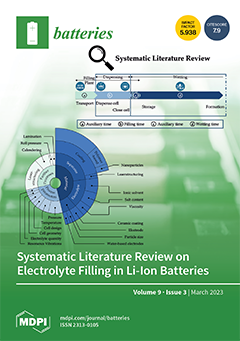The development of a stable catalyst with excellent catalytic performance for the oxygen evolution reaction (OER) in alkaline environments is a key reaction in various electrochemical technologies. In this work, single-atom catalysts (SACs) systems in which scandium (Sc), a rare earth metal, with
[...] Read more.
The development of a stable catalyst with excellent catalytic performance for the oxygen evolution reaction (OER) in alkaline environments is a key reaction in various electrochemical technologies. In this work, single-atom catalysts (SACs) systems in which scandium (Sc), a rare earth metal, with different N/C coordination environments (ScN
xC
3−x@SACs and ScN
xC
4−x@SACs of Sc) were systematically studied with the help of density functional theory (DFT) calculations. The results of the structural thermodynamic stability analysis indicated that the ScN
xC
3−x@SACs and ScN
xC
4−x@SACs systems are more stable with increasing N atom doping concentration around Sc. The ScN
3, ScN
3C, and ScN
4 with better stability were selected as the objects of subsequent research. However, ScN
3 and ScN
4 form Sc(OH)
2N
3 and Sc(OH)
2N
4 structures with double-hydroxyl groups as ligands because of the strong adsorption of OH species, whereas the strong adsorption of OH species by ScN
3C causes structural instability. Here, the overpotential (η) of Sc(OH)
2N
3 was 1.03 V; Sc(OH)
2N
4 had two reaction paths and the η of path 1 was 0.80 V, which was 0.30 V lower than that of path 2. Therefore, Sc(OH)
2N
4 can be used as a stable and promising OER catalyst with easy desorption of O
2 and good cycle performance. The hydroxyl ligand modification of Sc-N
xC
3−x@SACs and Sc-N
xC
4−x@SACs provides a method for studying the catalytic performance of other rare earth elements.
Full article





